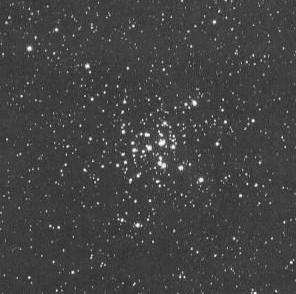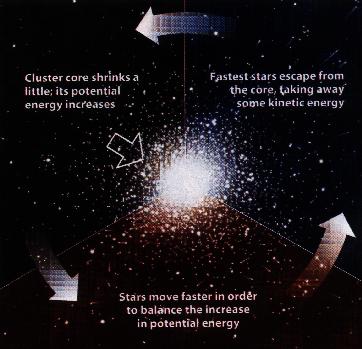
M 36

| The second model developed by Michel Hénon at about the same time did something entirely different: His simulations showed up a slowly changing equilibrium leading to an accelerated infall of the core. The reason lies in the random motions of the stars that are considered to balance the stars' mutual attractions. In the crowded centre, close encounters happen quite often and produce fast-moving escapers. These stars are pulled out of the core and take away some kinetic energy. The core needs to find a new equilibrium and shrinks a little. This increases the gravitational binding energy, and the remaining stars have to move a bit faster (they "heat up") to compensate for the higher potential energy. Then, however, they are more likely to be pulled out. The process repeats itself and accelerates into an uncontrollable runaway. The event the cluster is heading to is called the "gravothermal catastrophe" or "core collapse". | 
Gravothermal catastrophe |
Virtually the same process of core collapse happens in protostars, when the gas cloud falls in, but with one crucial difference: In protostars the core becomes hot and dense enough to ignite thermonuclear reactions. These reactions provide energy that compensates further shrinking. In globular clusters different energy source stops the collapse.
 2. Some observational characteristics
2. Some observational characteristics
|
| | 4. The core collapse

|
| Contents page | ||